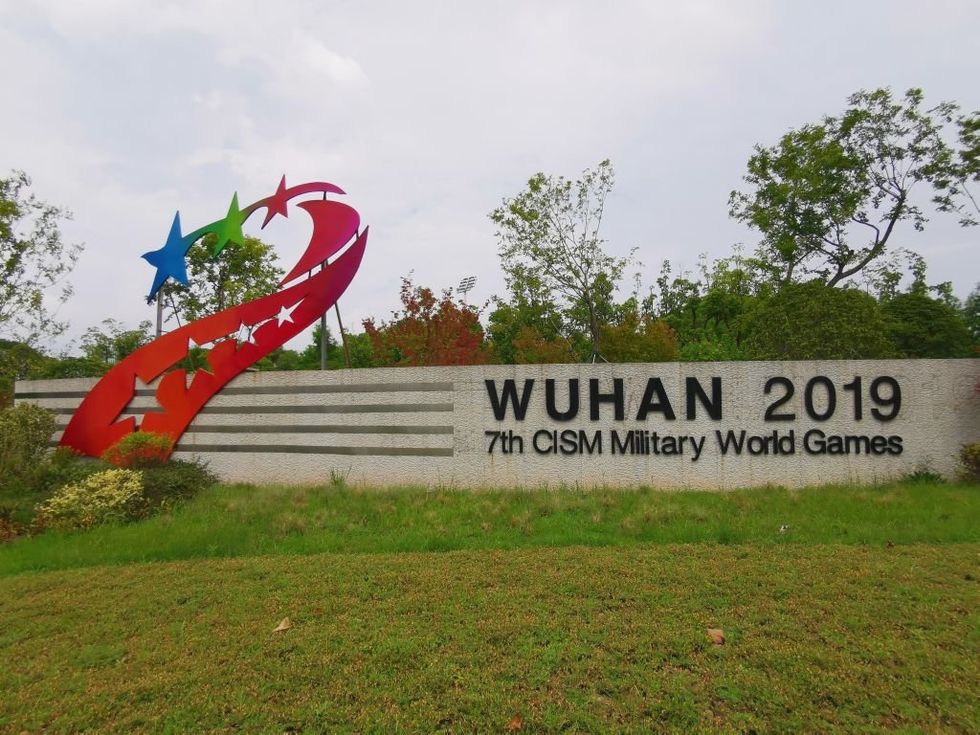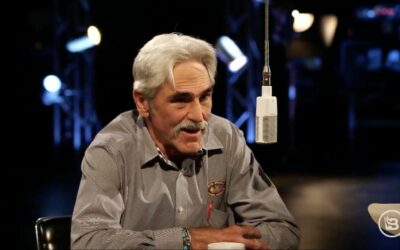Blaze News original: In 2019, nearly 10,000 international athletes competed in Wuhan. The official story about illnesses continues to morph.

Early in the pandemic, there was a concerted effort to downplay the possibility that the COVID-19 virus originated in the Wuhan Institute of Virology, where radical
gain-of-function experiments were conducted on coronaviruses, sometimes with American funding. Now, it appears that the lab origin theory was all along the most likely explanation.
The exact timeline regarding the initial leak and subsequent spread remains, however, somewhat fuzzy. The Chinese regime’s
cover-up of the initial spread and its destruction of critical evidence have made it difficult to nail down precisely when and how the virus got out.
Blaze News recently discovered that China may not have, however, been the only nation reluctant to disclose illnesses in Wuhan in late 2019.
Playing games with the timeline
Months prior to the World Health Organization declaring COVID-19 a pandemic, the Wuhan Municipal Health Commission reported a cluster of cases of pneumonia in late December 2019. The constituents of this cluster were far from being patients zero.
Three researchers meddling with coronaviruses at the Wuhan Institute of Virology — including an EcoHealth Alliance subcontractor— became sick enough “with symptoms consistent with both Covid-19 and common seasonal illness” that they needed to be hospitalized in November 2019.
Chinese state media
indicated that the virus may have begun spreading as early September of that year but, in a desperate effort to assign blame elsewhere, suggested it kicked off in the United States.
Researchers at Boston University and Harvard Medical School analyzed satellite imagery of hospital parking lots in Wuhan as well as search queries on China’s equivalent of Google from 2018 up until late 2019 and concluded that the virus may have begun spreading as early as August 2019.
“Between September and October 2019, 5 of the 6 hospitals show their highest relative daily [parking lot] volume of the analyzed series, coinciding with elevated levels of Baidu search queries for the terms ‘diarrhea’ and ‘cough,'” said the study. “Our evidence supports other recent work showing that emergence happened before identification at the Huanan Seafood market.”
In August, we identify a unique increase in searches for diarrhea which was neither seen in previous flu seasons or mirrored in the cough search data. While surprising, this finding lines up with the recent recognition that gastrointestinal (GI) symptoms are a unique feature of COVID-19 disease and may be the chief complaint of a significant proportion of presenting patients. This symptom search increase is then followed by a rise in hospital parking lot traffic in October and November, as well as a rise in searches for cough. While we cannot conclude the reason for this increase, we hypothesize that broad community transmission may have led to more acute cases requiring medical attention, resulting in higher viral loads and worse symptoms.
If the virus was in circulation by at least October, then a convention of nearly 10,000 athletes from around the world in Wuhan would have served as the perfect vehicle to take the virus global in short order.
In fact, some researchers have suggested that there was a good likelihood that the 7th Military World Games held in Wuhan from October 18 to October 28 — where delegates from 109 countries competed, in some cases near the Wuhan Institute of Virology — were indeed a super-spreading event.
Mixed messaging
Two Canadian military sources who requested anonymity because they were still serving in the Canadian military told the Financial Post in 2021 that there had been infections at the games.
One service member claimed he got “very sick 12 days after we arrived, with fever, chills, vomiting, insomnia. … On our flight to come home (at the end of October), 60 Canadian athletes on the flight were put in isolation (at the back of the plane) for the 12-hour flight. We were sick with symptoms ranging from coughs to diarrhea and in between.”
Upon returning to Canada, the service member said his family members took ill and his symptoms got worse and expanded, such that he experienced fatigue, nosebleeds, fever, and breathing pains.
While tested by a military doctor “for various issues,” he said he never was tested “for anything respiratory.”
The other service member said, “One-quarter of us got sick, there and when we returned. Some were bedridden for weeks. This made us potential vectors for the virus. The military did nothing. I was sick and others were, too, with Wuhan symptoms. … I was eventually given a swab test, which measures only recent exposure, and told to carry on.”
The Canadian athletes were apparently told by the surgeon general that their risk of having been exposed was “negligible.”
Julia Scott, a communications adviser with the Canadian Forces Health Services Public Affairs Department, told the Post, “We are not aware of any CAF members or civilians becoming sick at the games or after they returned. There have not been any COVID-19 cases identified amongst this group.”
“As their stay in Wuhan was well before COVID-19 pandemic was declared and before anyone was aware of the virus, members were not tested upon their return. Testing for COVID-19 was not available in Canada prior to January 2020,” continued Scott. “Once we were aware of potential risks, the CAF and Department of National Defence took immediate precautionary measures to avoid any illness or additional exposure to CAF members related to the novel coronavirus.”
A narrative slide
Blaze News recently asked the Canadian Department of National Defense whether its awareness about CAF members or civilians becoming sick at the Wuhan games, as expressed to the Post, has shifted in the years since.
In reply, a spokeswoman for the National Defense Department repeated much of what the department had previously told the Post but revealed that it “has subsequently been determined that some athletes experienced gastrointestinal symptoms on the flight to Wuhan for the Military World Games and during the return flight home to Canada.”
“Their symptoms and illness course of one to three days were consistent with gastrointestinal illness, or a ‘stomach flu,’ and were managed as such, consistent with typical contact precautions when managing patients with mild gastrointestinal illness,” added the spokeswoman.
The Mayo Clinic lists the following as symptoms of the stomach flu: diarrhea, nausea, stomach cramps, muscle aches, headache, and fever.
It appears the stomach flu could possibly be mistaken for COVID-19 or vice versa, given that the symptoms listed for COVID-19 by the the Centers for Disease Control and Prevention include diarrhea, nausea, muscle aches, and headache.
The Canadian Department of National Defense has yet to respond to Blaze News’ follow-up questions regarding the basis and timing of its subsequent determination, as well as whether the athletes’ supposed gastrointestinal illness has been ruled out as COVID-19.
The spokeswoman’s suggestion that athletes were sick en route to Wuhan may muddy the waters, especially since China has proven desperate in the past to claim Western forces brought the virus to Wuhan, potentially via the games.
For instance, Chinese operatives seized upon the theory that Maatje Benassi, a U.S. Army reservist who competed in Wuhan, was patient zero after she crashed during a cycling competition there and suffered a concussion.
Blaze News has reached out to coaches and scores of athletes from various countries who competed in Wuhan as well as officials linked to the International Military Sports Council — the outfit that organizes the competitions — for a better sense of the kind of illnesses that supposedly broke out at the games as well as where they may have originated.
While so far, there has been a deafening silence about infections at the games, it was not so early in the pandemic.
Early allegations of infection
There were multiple reports and admissions of infections at the games early in the pandemic by athletes besides the anonymous Canadians.
French pentathlete Elodie Clouvel, part of the French delegation invited to participate at the games, indicated in early 2020 that she and many other athletes likely contracted COVID-19 at the games, reported the American Prospect.
“We were in Wuhan for the World Military Games at the end of October. And afterwards, we all fell ill. Valentin missed three days of training. Me, I was sick too. … I had things I had never had before. We weren’t particularly worried because no one was talking about it yet,” said Clouvel. “A lot of athletes at the World Military Games were very ill. We were recently in touch with a military doctor who told us, ‘I think you had it because a lot of people from this delegation were ill.'”
Luxembourg swimmer Julien Henx told RTL Radio that two of his teammates got sick during the competition and stated, “There were 200,000 Chinese volunteers there, who went home in the evening and could very well have transmitted the virus to them.”
German volleyball player Jacqueline Brock indicated in early 2020 that “after a few days, some athletes from my team got ill, I got sick in the last two days.”
“I have never felt so sick,” continued Brock. “Either it was a very bad cold or COVID-19.”
Italian fencer Matteo Tagliarol told Corriere Della Sera, “When we arrived in Wuhan, almost all of us got sick. But the worst was returning home. After a week I had a very high fever, I felt like I couldn’t breathe. The illness didn’t go away even with antibiotics, I recovered after three weeks and remained debilitated for a long time. Then my son and my partner got sick. When people started talking about the virus, I said to myself: I’ve caught it too.”
Like Blaze News? Bypass the censors, sign up for our newsletters, and get stories like this direct to your inbox. Sign up here!








